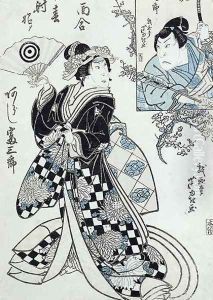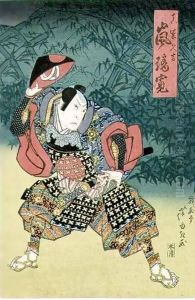Ippyotei Ashiyuki Paintings
Ippyotei Ashiyuki was a Japanese artist known for his work as a designer of ukiyo-e style woodblock prints, active during the late Edo period. He was born in 1782, and the exact date of his death is not well-documented, which is not uncommon for artists of this period. Ashiyuki worked in Osaka, which was a cultural hub distinct from Edo (modern-day Tokyo), where the ukiyo-e movement was centered. The Osaka artists, including Ashiyuki, were part of the Kamigata ukiyo-e tradition, which had its own unique style and focused more on the kabuki theatre and its actors than the courtesan and landscape prints that were popular in Edo.
Ashiyuki's works primarily depicted the kabuki theatre actors of his time, capturing the vibrancy and drama of the performances. His prints are characterized by their bold lines and use of color, as well as a dynamic sense of movement, which suggests that he had a deep understanding of the theatrical performances and actors he portrayed. Like many ukiyo-e artists, Ashiyuki's prints were collected as mementos by fans of the kabuki theatre and served as a form of popular media to advertise actors and performances.
The details of Ashiyuki's life and training are not well-recorded, but it is likely that he was a student or follower of another Osaka-based artist, such as Ryukosai Jokei, who is often cited as one of the founders of the Osaka School. Ashiyuki's career spanned from around the 1810s to the 1830s. Over these two decades, he produced a significant number of actor prints, which contributed to the visual culture surrounding kabuki in Osaka. His work was part of a larger movement that saw the production of single-sheet actor portraits known as yakusha-e, which were a popular genre in Osaka printmaking.
Although the details of his later life and death are obscure, Ippyotei Ashiyuki's works have been preserved and continue to be studied by enthusiasts of ukiyo-e and Japanese cultural history. His prints offer invaluable insights into the popular culture of Osaka during the Edo period, and his artistic legacy is recognized in the context of the history of Japanese art.

